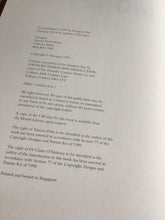Used very good
…. having made painting trips to the forest of Fontainebleau and the
Normandy coast at Honfleur and Le Havre, where he met the Dutch
open-air landscape painter Johan Barthold Jongkind (1819-91), Monet
sent two of his seascapes to the Salon exhibition, and they were
accepted. A portrait of his misress, Camille Doncieux, and a landscape
were alsco accepted in 1866 and another seascape in 1868.
Inspired in part by the controversial paintings Edouand Manet
(1832-83) was producing in the last years of the 1860, Monet began
to wrestle with subjects derived from the modern life of Paris. The
capital had been undergoing a process of extraordinary transformation
on the initiative of Emperor Napoleon IIl's prefect, Baron Haussmann.
'Haussmannisation' cut a series of huge boulevards, lined with
large-scale expensive apartment blocks and arcades of shops, through
the citys labyrinthine medieval streets, so beloved of an earlier
generation of Romantic poets and artists. These changes necessitated
the transplantation of the workers of Paris who had lived in small
upper rooms of che old buildings above the more lavish apartments of
wealthier Parisians-to a new region of suburbs beyond the city walls.
Monet, like many artists of the Impresionist circle, became fascinated
with both the new phenomena of boulevard culture and the suburban
districts, in which many pleasure spots blosomed alongside the
factories on the banks of the river Seine.
Monet's technique and style retlect a wonderful awareness of the
achievements of his teachers and contemporaries while also creating a
unique and constantly transtorming personal vision. The young Monet
synthesised the open-air techniques practised by Boudin and Jongkind
and theorised by the drawing master Lecoq de Boisbaudran with the
controversial subject matter of modern experience. The more abrupt
handling and traditional palette of his earliest works were derived from
the manner of Realist painters such as Gustave Courbet (1819-77) and
followers of the Brabizon School. In the following decades, Monet
moved away from the traditional modelling in black and swhite, knovwn
as chiaroso, to a sense of depth and volume created entirely through
colour relationships. Rather than using the dark reddish-brown ….





